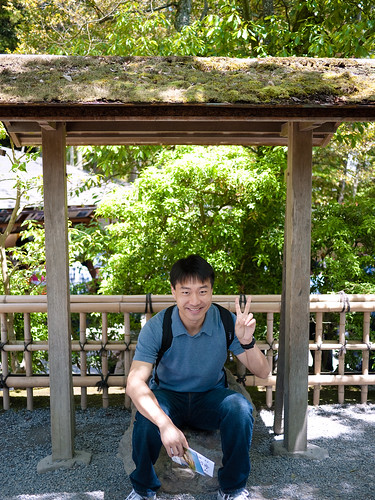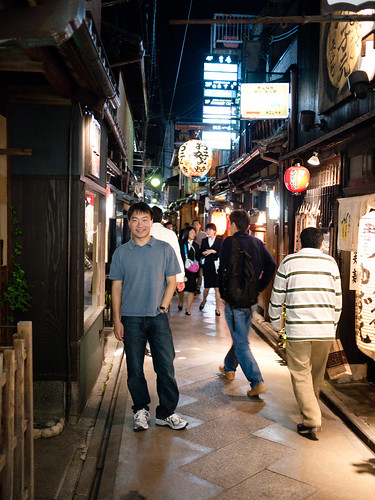Ginkaku-ji Temple (Silver Pavilion):

Path of Philosophy outside of Ginkaku-ji. Someone contemplating life while drinking beer.

Kinkaku-ji Temple (Golden Pavilion):

Ryoan-ji Temple:

The famous dry landscape garden. There are 15 rocks (number 15 denoting completeness in Buddhism) placed in the garden but from the veranda you can only see 14 at a time. Yes I get why that is profound but I still think it is silly. When we were narrowing down which temples to visit, Bob said this was his first choice since he just had to see what the hype was about. =P

A model of the zen garden.

This picture is really for Ethan. Ever since Chinese New Year, he has been obsessed with lanterns. We go down and touch the ones hanging from the restaurants in the plaza where we live every day (they must love that).
Fushimi Inari Shrine: I thought this was one of the coolest places in Kyoto.

Dedications to Inari (Shinto god of rice) as foxes are said to be messengers of Inari.

There are about 10,000 torii (Shinto shrine gates - translating to bird perches) that line the hiking trails above the temple. It takes 2 hours to walk along the entire trail.

Kamogmawa River:

Pontocho Street. Great nightlife, great restaurants.

Kyoto Station.
My favorite places to visit in Kyoto were Ginkaku-ji, Kinkaku-ji, Fushimi Inari, Gion and Pontocho. Okay, that might practically be all the places we visited. I loved everything about Kyoto. I was wondering two main things as we visited the temples and shrines: why were the statues of the deities (typically of Jizo) wearing red bibs/hats? Answer: red is the color thought to expel demons/sickness and since Jizo is the guardian of all things, especially children, the red garments were given to help protect them. And what does the saffron orange color the torii and temples represent? Okay well according to Wiki orange is the essence of Buddhism and symbolizes wisdom, strength and dignity.


